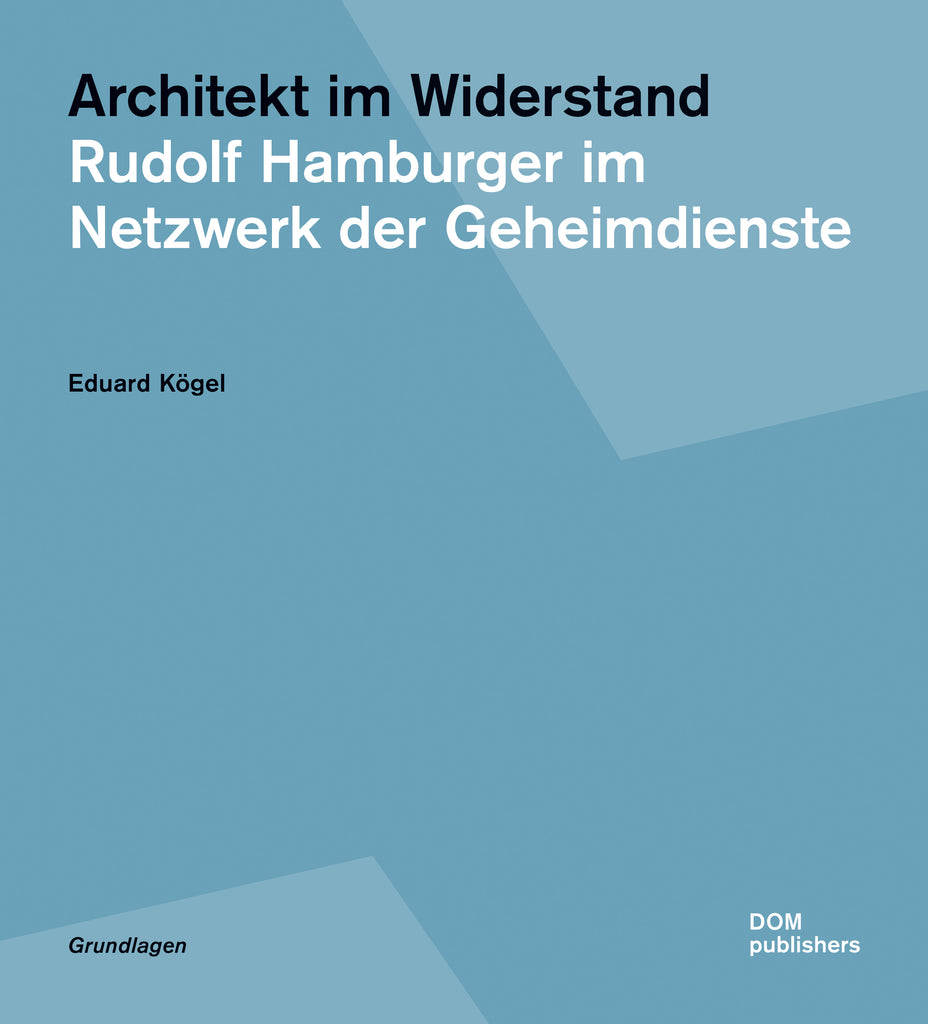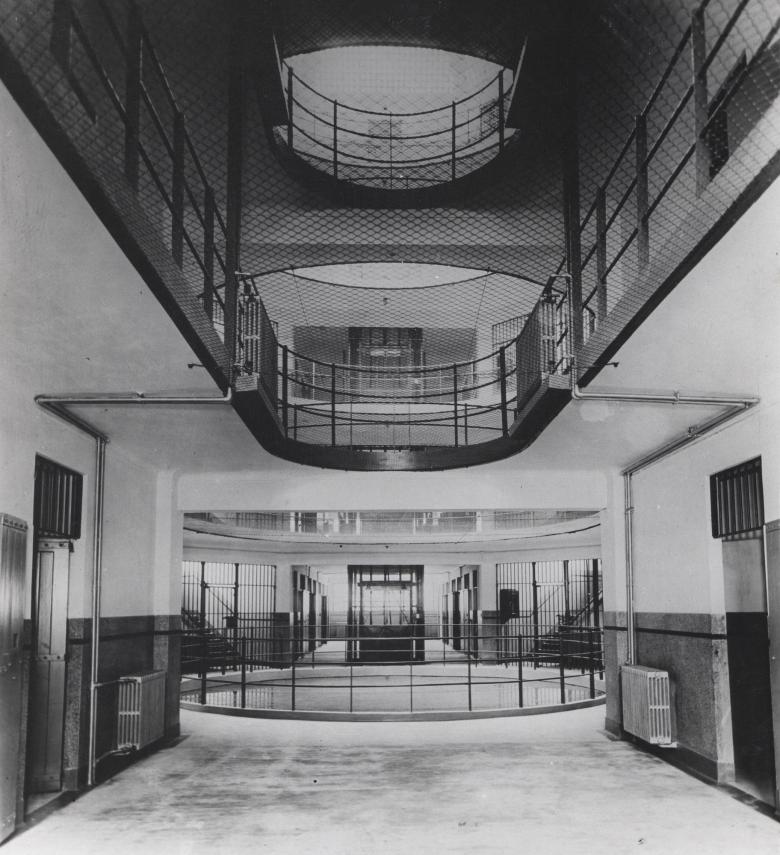Through Time With Rudolf Hamburger
The biographies of architect Rudolf Hamburger and his wife Ursula are outstanding, since Rudolf’s journey through life brought him deep into Asia in 1930, while Ursula later worked for various secret services and finally as an author in the GDR under the name of Ruth Werner. Author Eduard Kögel has devoted many years to Rudolf Hamburger and has now published a comprehensive book about him that is well worth reading.
Starting out is not easy because too many impressions are still in my mind after reading the book. The life’s journey of architect Rudolf Hamburger (1903-1980) is actually the subject of the book, but there are so many side scenes and influencing factors that one rather feels as if reading a compact, intercontinental historical drama. At the beginning of the 1930s, Hamburger, a Jew with a bourgeois background, together with his wife Ursula, went to Shanghai via Moscow and the Trans-Siberian Railway. Germany was in a world economic crisis, whereas Shanghai was experiencing a building boom. Hamburger had studied under Hans Poelzig, so he also brought the ideas of New Objectivity with him. He soon worked as an architect for the city administration of the International Concession — one of the three administrative zones alongside the French Concession and the Chinese City Administration. While he embarked on some major construction projects, his wife worked for the Transocean Press Agency and with the American journalist Agnes Smedley, who worked as a correspondent for Frankfurter Zeitung.
After politically calmer years (for Rudolf), the current developments in Europe in early autumn 1935 prompted Hamburger to actively do something against the National Socialists in Germany. Ursula informed the Russian military secret service, for which she was working, and the family travelled to Moscow. In his book Kögel writes: "The decision to return to Europe with no definite destination was directed against his talent. Never again would Rudolf Hamburger find such strong architectural means as those he had developed in his early years as an architect in Shanghai."
As it turned out, the Hamburgers had to make numerous stops, which Kögel describes in the chapter "Emigration im Kreis" (Emigration in Circles): Poland, Switzerland (where they divorced in 1939), the Soviet Union and Iran. In Tehran, Rudolf Hamburger again worked as an architect but was then accused of double espionage by Moscow; he was sentenced and sent to a labor camp until 1952. After that, Rudolf lived in exile in the Ukraine for three years. During this time, his fellow student and friend Richard Paulick, whom Rudolf had helped to emigrate to Shanghai in 1933, made contact with him again. The documents do not give any details on how exactly Hamburger, who was considered a stateless foreigner in his temporary home country — neither a prisoner of war nor a political emigrant — finally obtained new ID papers. In 1955, at any rate, he reached East Berlin and began working for the Dresden city administration the same year, before becoming chief architect in Hoyerswerda from 1959. The new, socialist residential town of Hoyerswerda was to become the home of the workers of the state-controlled coal mine.
Eduard Kögel works out Hamburger’s dense life and its numerous stages — some full of luck and success, others marked by fear and danger — with incredible precision. The accompanying figures that were to shape and form Rudolf throughout his life are not neglected either. They appear in the form of letters, anecdotes and short biographical notes. The result is a comprehensive picture of a person and an understanding of how someone matures into a personality.
With its scope, the book fits in well with the existing Grundlagen (Basics) series by DOM Publishers. In addition to the content, it is Kögel’s use of language and communication skills that make the worthwhile book enthralling. Not every biography can claim this. It is precisely the combination of the seemingly rather quiet Rudolf, who built for Shanghai’s administration, and his bustling wife Ursula, who gave appalled reports in letters about the adverse living conditions of the Chinese and became more and more radicalized, that sets the pace right at the beginning of the book. Later, without Ursula as the second main character, it is especially the drama around the person of Rudolf Hamburger, who becomes entangled with military intelligence services of all stripes throughout his life.
Katinka Corts: With the book about Rudolf Hamburger you have become part of the successful and meanwhile quite comprehensive DOM Publishers' Basics series, in which 85 books in different languages have been published since 2013. How does Hamburger fit in?
Eduard Kögel: The biography of Hamburger shows the life of a Jewish architect and his path through exile, resistance and the political upheavals of the 20th century. Since the topic of exile is often presented from the perspective of those who eventually "got somewhere" in another country, I thought it was important to also present journeys through life that found a position beyond the given political framework, which, however, was not reflected in a significant professional contribution. It is not about winners and losers, but about the wide spectrum of exile stories.
The title inspires reading; with "Widerstand" (Resistance) and "Geheimdienst" (Secret Service) already on the cover, one expects an interesting personality. How did you first become aware of Hamburger and what is it about his person that fascinates you?
After I started to deal with Hamburger, aspects gradually came to light that I had not originally expected. The dominant narrative about his career was not influenced by secret service aspects, even in his family. Little by little, while studying the original files in the secret service archives, stories emerged that not only concerned his own life, but also provided information about the ideological abysses and pitfalls of the 20th century. That is why it seemed important to me to use his example to show how breaks and continuities have left traces in the German post-war architecture scene. On top of this, Hamburger’s life served as a literary model for various novels.
You have been closely connected with the Asian region and its architecture for many years. Are there any traces of Hamburger left and what effect do they have today?
Between 1930 and 1935, Rudolf Hamburger was able to construct four large buildings in Shanghai, three of which are still standing. The Nurses’ Home was recently "refurbished" and is difficult to recognize today. The school was also "renovated" without paying much attention to the original idea. The prison buildings still exist and are used as such. Since 2008, the entire prison complex has been under a preservation order, and people are now waiting for the use to be relocated so that the quarter can be made available to the creative industry. I don’t know yet when this will happen and what it will look like then.
Hamburger came from a family that was very progressive at the time. His father, Albert Max Hamburger, managed a textile company and had a housing estate built for his workers, while his mother, Else, founded a day care center and childcare facility for the workers’ children. Rudolf was also integrated in this day care center and got to know various family concepts. This open way of thinking and acting must have been formative. Did he maintain this attitude throughout his life?
Yes, I think that Rudolf, unlike his wife Ursula (married in 1929, divorced in 1939), who was much more strongly anchored in radical communist ideals, remained committed to humanist ideals throughout his life. I am convinced that this has to do with his liberal Jewish home and that he was influenced by the ideals of his family. On the one hand, this means taking responsibility and on the other hand, not falling short of certain basic conditions.
You once said in conversation, "actually it should have been a film, now it’s a book." Would you like to comment on that?
The life of his divorced wife was made into a film during GDR times (based on her book Sonya's Report*). Since his story is also set in an environment characterized by secret actions, and since the documents contain scenes at many stages that beg to be filmed, I can imagine that his life would also make for an exciting series, the background of which would present the historical context.
*Ruth Werner was probably the most important female agent of the 20th century. In 1930 in Shanghai she met GRU spy Richard Sorge, made her house available for illegal meetings and worked as a spy herself. After the separation from Rudolf Hamburger she worked in many countries: for Stalin she radioed from Manchuria and Poland; for the "Red Orchestra" from Switzerland; in England she was the contact person for physicist Klaus Fuchs and passed on the formula for the atomic bomb to the Soviets. As a colonel in the Red Army she ended her career as a spy and lived as an author in the GDR. In her book Sonya’s Report she biographically reviewed her life; the film version followed in 1982.

Architekt im Widerstand. Rudolf Hamburger im Netzwerk der Geheimdienste
Eduard Kögel
21 x 23 cm
316 Seiten
170 Illustrationen
Paperback (in German)
ISBN 9783869227610
DOM Publishers
Dieses Buch kaufen



